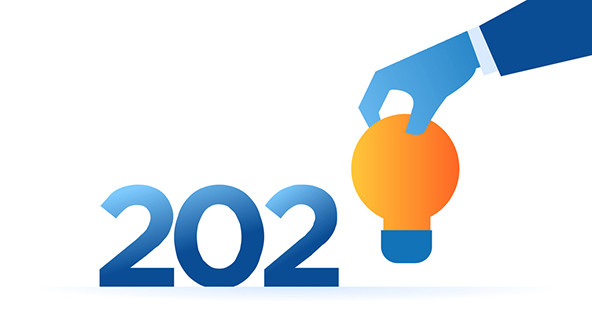 (Illustration by iStock/muhamad rukmana)
(Illustration by iStock/muhamad rukmana)
Authors of SSIR’s most popular articles in 2020 explored COVID-19, equity in philanthropic funding, the B Corps movement, and the connection between inner well-being and social change. And in a perhaps unsurprising turn given the pandemic's extraordinary impact, SSIR's special series "Rethinking Social Change in the Face of Coronavirus" as a whole garnered more attention than any individual articles.
1. Overcoming the Racial Bias in Philanthropic Funding
Racial bias—both personal and institutional, conscious and unconscious—creeps into all parts of the philanthropic and grantmaking process. The result is that nonprofit organizations led by people of color receive less money than those led by whites, and philanthropy ends up reinforcing the very social ills it says it is trying to overcome. See also this SSIR Live! webinar on breaking down barriers to capital.
2. Three Things Nonprofits Should Prioritize in the Wake of COVID-19
Why organizations need to examine their social impact, economic viability, and capacity to deliver in order to remain relevant and viable both now and into the future. Part of the “Rethinking Social Change in the Face of Coronavirus” series.
Are you enjoying this article? Read more like this, plus SSIR's full archive of content, when you subscribe.
3. The B Corp Movement Goes Big (Fall 2020 Issue)
The campaign to reform capitalism by making companies prioritize stakeholders could never succeed without getting large multinational corporations on board. Now that Danone, Laureate Education, and Natura have signed on, the B Corp movement is demonstrating how it can be done. This article is open to subscribers only. Learn more about subscribing to SSIR.
4. COVID-19’s Impact on Nonprofits’ Revenues, Digitization, and Mergers
Interactive charts show how hundreds of nonprofits face dramatic changes in their operations and plans as the pandemic continues to upend life around the world. Part of the “Rethinking Social Change in the Face of Coronavirus” series.
5. How to Build Better Calls to Action
A well-told story can inspire people to engage with social and environmental issues, but how do nonprofits channel that energy into behaviors that make a difference? Behavioral science can help point the way.
6. Connecting Individual and Societal Change
Supporting the inner well-being of change makers can boost capacity for innovation and collaboration, and ultimately lead to more effective solutions to social and environmental challenges. Part of the "Centered Self" series on the connection between well-being and social change.
7. Self-Inquiry for Social Change Leaders
How the internal work of self-inquiry can meaningfully shift our perceptions and behaviors in ways that positively impact the outer world, and how leaders of social change are incorporating the practice into their work and lives. Part of the "Centered Self" series on the connection between well-being and social change.
8. Risks for the Future We Want
Philanthropists must learn from protesters and reimagine the formula for making change on racial justice.
9. The Case for Causal AI (Summer 2020)
Using artificial intelligence to predict behavior can lead to devastating policy mistakes. Health and development programs must learn to apply causal models that better explain why people behave the way they do to help identify the most effective levers for change. Learn more about subscribing to SSIR.
10. Five For-Profit Practices That Philanthropy Should Avoid
Interviews with millennial donors from the Silicon Valley startup world and conversations with MBA students show a pattern of overreliance on certain for-profit principles in the nonprofit realm, despite potential flaws.
Support SSIR’s coverage of cross-sector solutions to global challenges.
Help us further the reach of innovative ideas. Donate today.
Read more stories by SSIR Editors.

